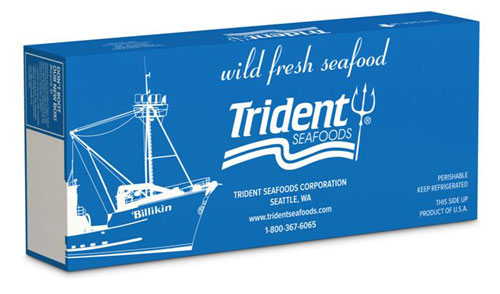|
Fish Factor The five million pound question June 04, 2012
When fishing seasons open, it’s impossible to not catch a mix of fish when they blanket the sea bottom, and fish of all kinds and sizes will go after a baited hook. So certain amounts of “prohibs” are allowed to be taken in a fishery, and there are strict limits on how much. When it comes to setting the rules, the buck stops with fishery managers. Rules about halibut bycatch will be the five million pound question when the North Pacific Fishery Management Council convenes this week in Kodiak. The NPFMC sets the catch and bycatch limits for all federal-water fisheries (3-200 miles) in the Bering Sea and Gulf of Alaska, which produce 80% of the state’s seafood landings. Since the mid-1980s, managers have allowed 2,300 metric tons (five million pounds) of halibut bycatch each year in Gulf of Alaska groundfish fisheries. Meanwhile, commercial fishermen have had their halibut catches reduced 63% in recent years due to dwindling numbers of legal sized halibut, and sport charters are being limited to one or two fish per day. “I think the basic fact is that for so long there hasn’t been any adjustment for bycatch. Yet for both commercial and sport charter fisheries, there have been huge adjustments based on shifts of halibut biomass. That on its face is not quite equitable,” said Denby Lloyd, Kodiak fishery advisor and a former NPFMC member. There’s plenty of finger pointing to go around. Most of the halibut bycatch (2,000mt) is taken in trawl fisheries, with 300mt for the hook and line cod fleet. A big unknown is the amount of fish discarded by the halibut IFQ fleet, which unlike the others, is not required to have onboard observers and/or vessel monitoring coverage. Analysts estimate that due to 32 inch size restrictions for retention, for every 10 halibut the IFQ fishermen catch, they must throw six smaller ones away. (A restructured observer program set to be in place next year will include coverage of the longline halibut fleet as well as vessels less than 60 feet.) Fishery managers have clearly gotten the message. Halibut bycatch is the first order of business on the NPFMC agenda when it convenes on Wednesday, and 20 hours are allotted on the topic. At the get go, the group is poised to reduce the bycatch level by up to 15%. "It’s a small cut at this juncture, but it's a first step to continually reducing halibut bycatch," said Theresa Peterson of Kodiak, a member of the Council advisory panel. At the same time, Council staff have compiled a discussion paper on comprehensive approaches to bycatch control beyond setting caps. “There are a lot of options, but it’s in the early stages and not even in the initial review of an analysis,” said Lloyd, referring to the glacial pace of Council processes. “The really important part comes later on. And people should make sure that the Council doesn’t impose a 10 or 15% reduction and then go on to other business. It’s got to be step one of a comprehensive approach. “ Options in the Council document include voluntary bycatch cooperatives (without share allocations) modeled after the Bering Sea pollock fishery, where members share real time information on avoidance measures, and have “rolling hot spot” closures in areas where “prohibs” are appearing. “That’s been very successful and the trawl fleet has done it for themselves,” said Lloyd. “They established a structure where the co-op limits bycatch and applies individual boats with their own penalties. That was pretty darn creative.” Other possibilities listed are fixed area closures, individual bycatch quotas and electronic monitoring, both of which are used in Canada, with great results. The Gulf trawl sector advocates for a catch share program as the best way to slow down their groundfish fisheries and reduce bycatch, but that has met with some resistance. “Gulf trawlers have needed catch shares as a tool for years, yet many of the folks who are howling the loudest about halibut bycatch reductions are the same ones who don’t want rationalization for the trawlers,” said an industry stakeholder. At a recent workshop convened by the NPFMC and the International Pacific Halibut Commission, 19 presentations were given on halibut bycatch estimation, halibut growth and migration and effects on harvest strategy. All concluded that halibut bycatch is reduced with individual vessel responsibility. Eco-Box Trident Seafoods introduced 100% recyclable fish boxes to the world with its shipments of some of the first fresh Copper River reds. Trident is the first to use the no-wax, wetlock fiber boxes made by engineers at International Paper. The “AquaSafe” boxes meet criteria for airline shipment and are fully recyclable. They can also be wet-iced, containerized and shipped by barge or truck.
“Most importantly, the boxes maintain the integrity of the product,” said John van Amerongen, Trident’s Chief Sustainability Officer. A DON’T BOOT OUR NEW BOX! panel on the bright red and blue fish boxes encourages customers to recycle them along with other cardboard. “It’s another pearl in the sustainability string,” van Amerongen said. People are really paying attention to packaging and to us it is synonymous with our commitment to sustainability. We are proud to provide healthy products and innovative packaging to seafood lovers based on those foundations.”
This year marks the 21st year for this weekly column that focuses on Alaska’s seafood industry. It began in 1991 in the Anchorage Daily News, and now appears in over 20 newspapers and web sites. A daily spin off – Fish Radio – airs weekdays on 30 radio stations in Alaska. My goal is to make all people aware of the economic, social and cultural importance of Alaska’s fishing industry to our state, the nation and the world.
|
||

